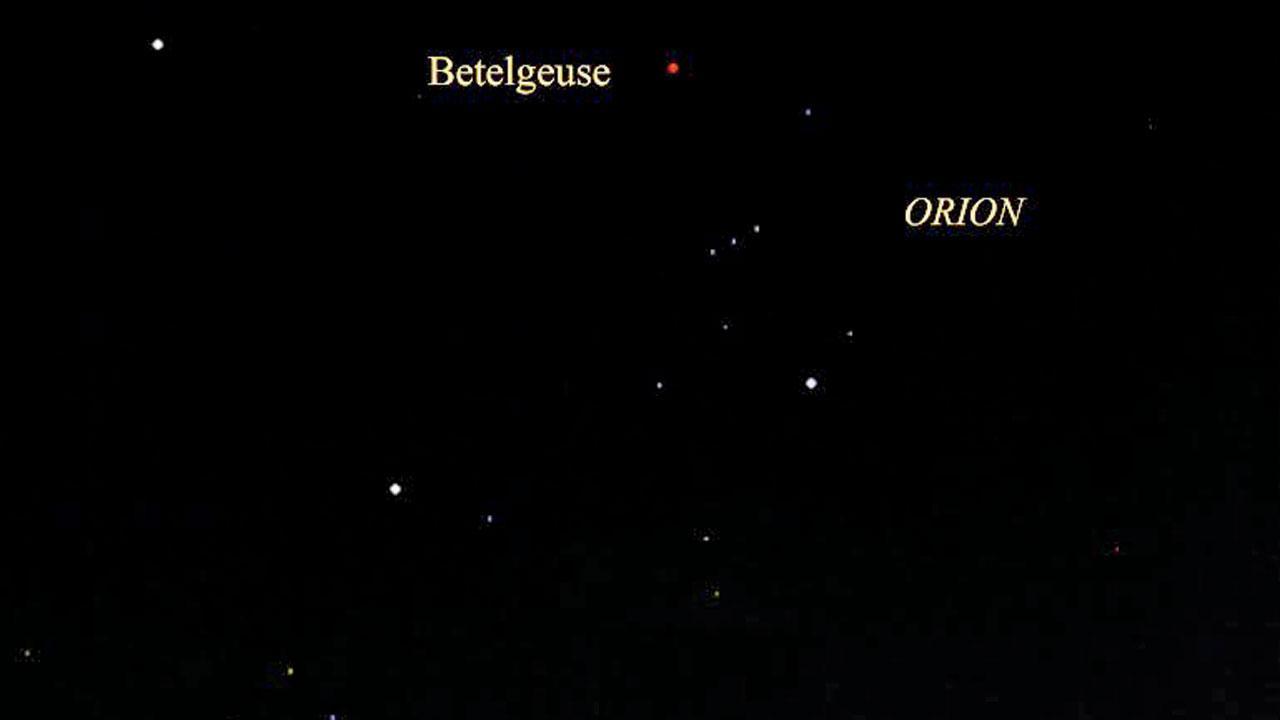Every year, the Betelgeuse star, known as Kakshi in India, appears overhead in southern part of the sky and burns with a red hue

The star at the upper left corner of the Orion constellation or Mrugha is Betelgeuse, commonly known as Kakshi in India
Although roses are synonymous with Saint Valentine’s birthday celebrated conventionally as Valentine’s Day across the globe on February 14, there is one such ‘rose’ that appears among the millions of stars in the sky and burns brighter only on this particular day.
ADVERTISEMENT
On February 14 if one looks up at the sky facing South, well above the horizon, they will be able to see three stars in a row surrounded by four bright stars forming a rectangle. These seven stars together make up the Orion constellation or Mrugha, meaning stag or male deer, in Indian astronomy. The star at the upper left corner of the rectangle, burning with a distinct red colour on this day, is Betelgeuse, the Indian name for which is Kakshi – also referred to as the celestial Valentine’s Day rose.
Speaking to mid-day, Arvind Paranjpye, director of Nehru planetarium, said, “Every year around February 14, the Betelgeuse star appears right overhead. It rises four minutes earlier every day, and on this Valentine’s Day, it will be overhead at 8:30 pm. So if people look up at the sky in the southern direction at that time, they will be able to view Betelgeuse glowing in a distinct red colour.”
Paranjpye pointed out that Betelgeuse was also called ‘supergiant’. He added, “It is 700 times bigger than our Sun. If you place it where the Sun is, our Earth would get engulfed by it. The star is also about 500 to 600 light years away from us. Betelgeuse has been in the news since last year when observers noted that the star had ‘visibly’ dimmed. It is believed that it threw off some of its outer material into space, which then blocked the light from the star. Betelgeuse is expected to explode any day in the next 100 years, and when it does, it will be brighter than the Moon as seen from the Earth.”
 Subscribe today by clicking the link and stay updated with the latest news!" Click here!
Subscribe today by clicking the link and stay updated with the latest news!" Click here!







